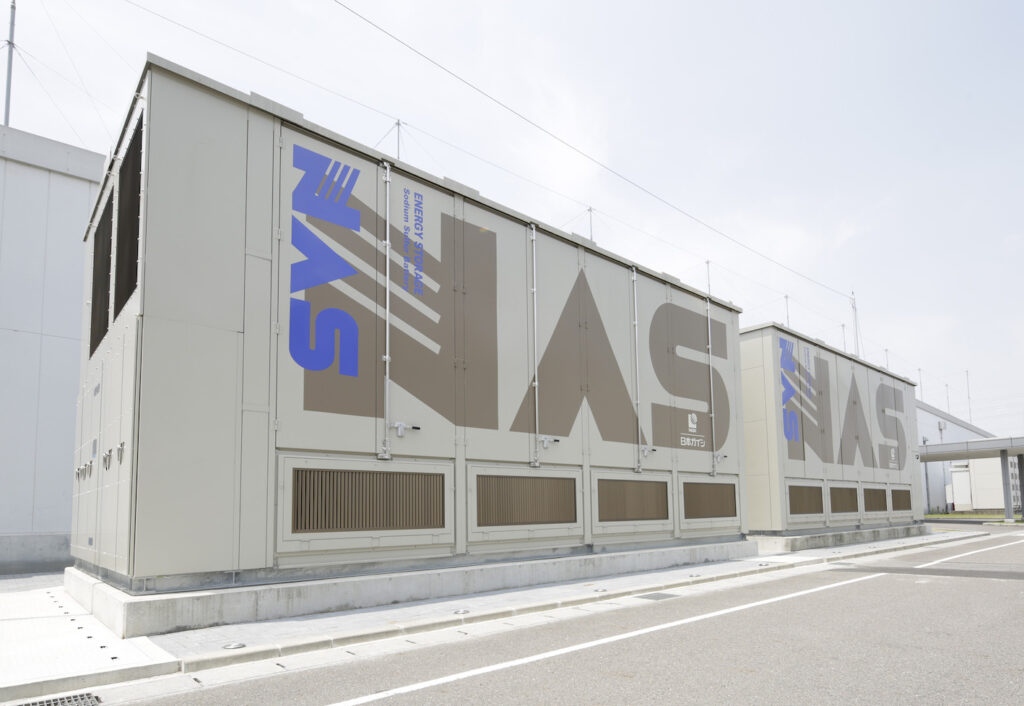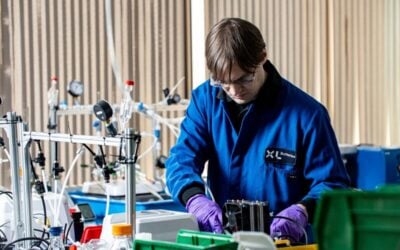
Technologies from US vehicle-to-grid (V2G) solutions company Nuvve and NGK’s sodium sulfur (NAS) batteries will provide ancillary services and other grid stability applications in Japan.
Japan’s grid-balancing market is not widely open to participation from batteries today, with regional power companies effectively responsible for keeping their grids stabilised and keeping the frequency regulated — at 50Hz in eastern and northern Japan and at 50Hz in the west and southern parts of the country.
However, in partnership with Chubu Electric Power Miraiz, the electricity retail and demand response aggregation spinoff of one of those regional power companies, Chubu Electric Power, and Toyota Group’s trading arm Toyota Tsusho, California-headquartered Nuvve took part in a demonstration to prove that its V2G tech can be used effectively to deliver safe and stable power to the grid inexpensively.
Nuvve’s control system, which can interface with different types of electric vehicle (EV), effectively controlled the dispatch and charging of EV batteries, aggregated together to form a virtual power plant (VPP).
Try Premium for just $1
- Full premium access for the first month at only $1
- Converts to an annual rate after 30 days unless cancelled
- Cancel anytime during the trial period
Premium Benefits
- Expert industry analysis and interviews
- Digital access to PV Tech Power journal
- Exclusive event discounts
Or get the full Premium subscription right away
Or continue reading this article for free
Meanwhile, Chubu Electric Power Miraiz also trialled the use of Japanese company NGK Insulators’ NAS battery technology. The larger scale battery systems, which have been used in grid applications around the world, ranged from 14MWh to 17MWh and were also aggregated into the VPP.
Nuvve said the control and dispatch of EV batteries was delivered with the required precision and fast response times, using the company’s platform, Grid Integrated Vehicle (‘GIVe’).
Chubu Electric Miraiz meanwhile said that demand response from customer sites and private power generation equipment will also be added into the VPP’s grid power adjustment resource pool and used a high-speed control engine it had developed in-house to control those resources and the NAS batteries.
Energy-Storage.news reported on that project as it got underway in April 2021.
After the success of those demonstrations, transmission system operator approval has been given to the partners to provide balancing services including frequency response. Chubu Electric Power’s grid, in the central part of the main Japanese island Honshu mainly operates at 60Hz, but with a smaller portion at 50Hz.
Chubu said that as the proportion of renewable energy on the grid increases, so will the need for balancing services. Japan is targeting for 36% to 38% of its power to come from renewable sources by 2030, up from a previously set target of 22% to 24% by that year.
Nuvve recently signed an agreement in the US to add its technologies to VPP projects in development by Swell Energy, a distributed energy resources (DER) aggregation specialist which has signed over 300MWh of VPP contracts with US utilities.
NGK’s high temperature, rechargeable and long-duration NAS battery was developed in the late 1980s and used in regions including the US, Middle East and Asia.
Its biggest project to date was 108MW/648MWh of NAS battery energy storage systems (BESS) across several sites in Abu Dhabi, UAE, completed in 2018. More recently, chemicals company BASF commissioned a 950kW/5,800kWh system at one of its production sites in Antwerp, Belgium last year and NAS batteries are being used in Mongolia’s first-ever solar-plus-storage project, announced a few months ago.
This article has been updated with an image reflecting the more current iteration of NGK’s NAS BESS than the old project picture previously used.





